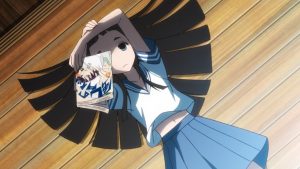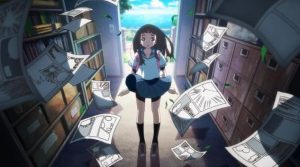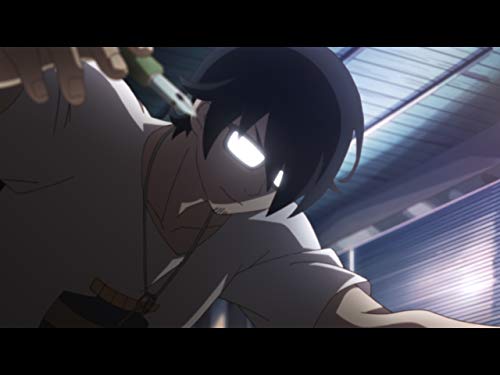
The Sketch is Always Better than the Ink
- Episodes : 12
- Genre : Slice of Life, Comedy
- Airing Date : April – June 2020
- Producers : Ajia-Do
About Kakushigoto
A uniform is interesting in that it’s attire that people wear in order to tell them apart from everyone else, but from within that kind of community, a uniform is what you wear so that no one is different. That being said, there is a special type of uniform; one that relies on the fact that people wearing it can be told apart from other people in uniform; one that exists to hide as much as it exists to highlight. That uniform is called “the disguise”.
Normally donned by superheroes, the disguise just so happens to be the workplace attire of a father trying to protect his daughter from the dangers of his work. This time; however, it isn’t a visceral danger that Goto Kakushi is trying to protect his daughter Hime from, it’s the embarrassment of having a dirty gag-comedy mangaka for a father! Kakushigoto layers upon the concept of disguise by having protagonist Goto Kakushi interact with a store clerk named Mario, who knows all about his secret. Mario calls Kakushi “Clark Kent”, drawing an interesting parallel between Kakushi and the aforementioned superheroes.
Contains Spoilers
Themes
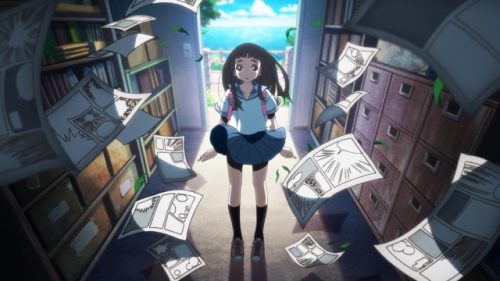
1. Secrecy
Secrecy is the series’ main theme and even governs how the series presents itself. Kakushigoto’s most interesting element is how it packages the hilarious day-to-day escapades of Goto Kakushi as he attempts to hide his secret from his daughter. The first episode shows Hime on her 18th birthday, travelling to an unknown destination she dubs “Pandora’s Box”. Our perspective is split between Hime as an 18-year-old and Hime as a 10-year-old as the story attempts to recount how we got to the point of Hime finding out her father’s most closely guarded secret. The Pandora’s Box allegory changes the overall feel of the series from just a funny gag-anime to something hilarious, heartfelt, and also bearing a cogent thematic narrative.
2. The Pandora Allegory
The Pandora allegory is thematically very important because in this case, understanding the Pandora subtext is one of the ways in which we gain insight into the layered nature of Kakushigoto the show, as well as Hime’s relationship with and perception of her father. “Pandora” gives the implication of a dramatic, even tragic story surrounding the big reveal and thus, gives Kakushigoto a bit of an enigmatic edge behind all the comedy. Each Kakushigoto episode is hence structured in a way that gives priority to the events of Hime’s childhood leading up to the present day, often tucking snippets of the current Hime dealing with the secrets that lay unraveling before her.
3. Parenthood
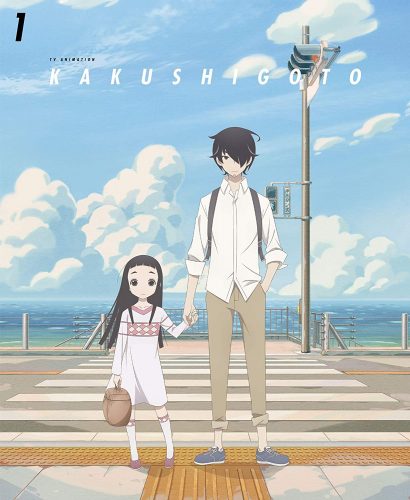
Kakushigoto maintains a light and comedic feel throughout, with ridiculous interactions between characters, as well as heartwarming comedy between Hime and Kakushi at home. Parent-child relationships are also central to Kakushigoto’s story because of Kakushi’s relationship with Hime, as well as the convoluted off-screen relationship Kakushi has with his father-in-law. We see how young Hime doesn’t seem to ask too many questions and this brings up interesting things about her character. This is important to note, because Kakushigoto as a premise just doesn’t happen the way it does in the series without a child as unassuming, unbothered and content as Hime is throughout the show.
4. The Changing Tides of Time
Hime’s role as the child and the alternate perspective as well as the overall main perspective of this show gives her an interesting positionality as a protagonist in this somewhat sombre, expository walk down memory lane. To that effect, the colour scheme changes slightly when alternating between the current time, with the Kamakura house’s blue roof being the colour for Hime’s 18th birthday; and the Nakameguro house’s orange roof for Hime’s childhood as a 10-year-old. This can also be seen in the final still of the opening theme song which juxtaposes older Hime enveloped in a blue background with Kakushi in orange. With this contrast in timelines, the story manages to feed us two coherent, cogent storylines, although the time from Hime’s childhood is given priority and more time on screen.
Honey’s Anime Verdict

On one hand, Kakushigoto is a heartfelt comedy about a doting father, on the other hand, it’s a tragic story about a manga artist trying to be a good dad as his life falls apart. Then it ties together an anachronistic narrative in which we are taken on the journey of piecing together the truth, as well as getting true insight into what the characters’ lives are truly like in the present day.
Kakushi’s amnesia in the final episode was cliché, but the show makes fun of itself for that through his now-former editor, Tomaruin, which recovers the show’s standing a little bit, but it still leaves one yearning for a more interesting plot device to be used especially in the final episode of the series. Be that as it may, the journey of revealing the full context of this particular family’s home life is a beautiful one, with many wholesome moments but also many gut-busting comedic moments that contrast beautifully with the sullenness of Hime’s 18th birthday.
As much as we loved the series, the ending left a few things to be desired. Many elements that were at play in the series ending came more like abrupt exposition rather than the tying of loose ends and this can be attributed to how the series held out on answering many of its major questions for much of its duration until the last episode or two. Overall; however, Kakushigoto comes highly recommended. The story is layered enough to be appealing to many people while also being a calm and light watch for people who enjoy slice of life shows. The way the show ends is also fulfilling in that it ties all the loose ends and feels like a story that was very beautifully crafted. From visuals to the experience itself, Kakushigoto is great, every slice of life fan should watch it!
Recommended Post
The Art of the Anti-Conversation in Kakushigoto
Recommended Post
Kakushigoto – Pandora and the Secret of the 18 Boxes
Recommended Post
6 Anime Like Kakushigoto [Recommendations]
Recommended Post
The 5 Best Season Finales/Series Endings of 2020 Anime
Recommended Post





